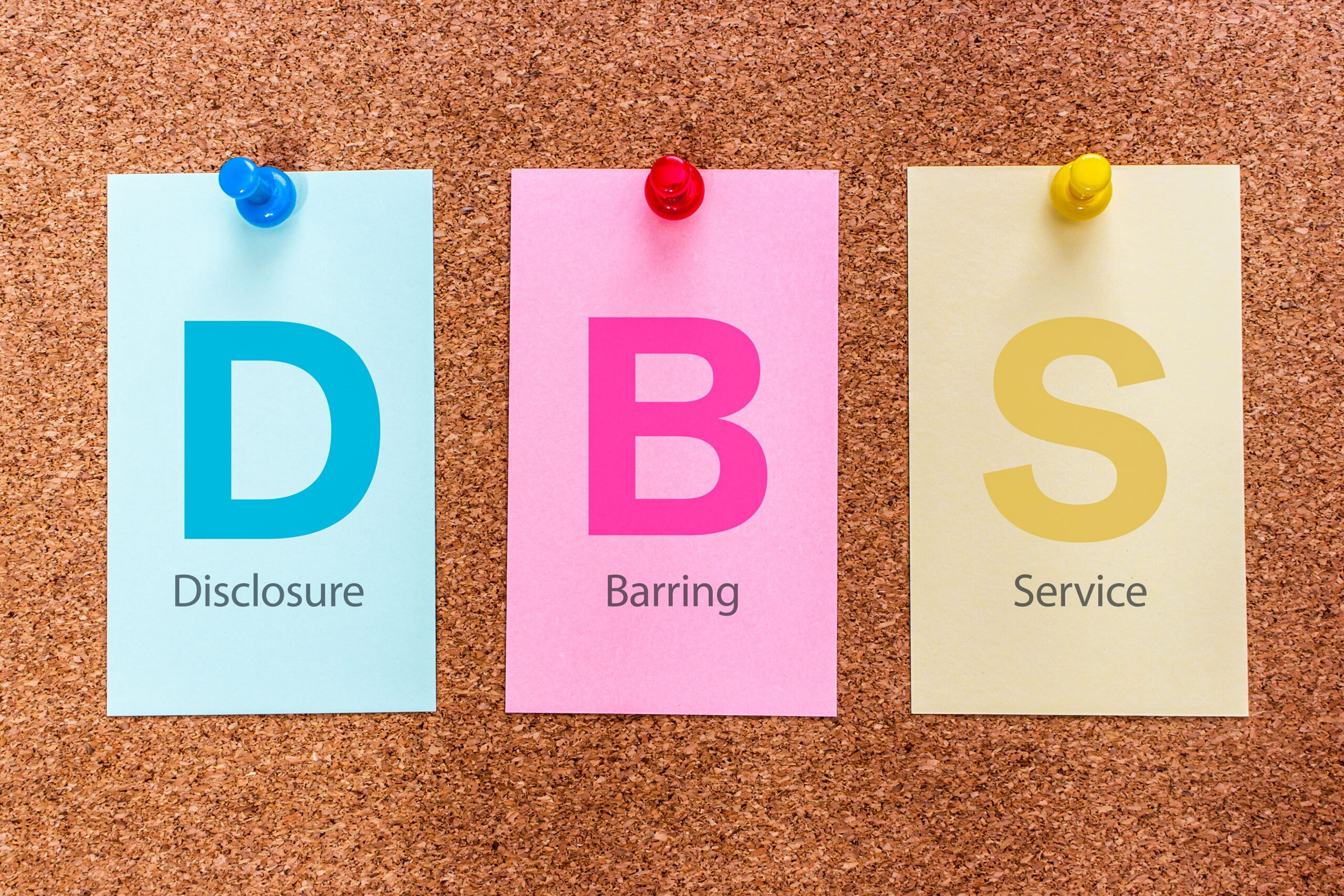If you’re searching for a “CRB check for schools” or “CRB check for teachers,” you’re actually looking for what is now known as a DBS check. The Criminal Records Bureau (CRB) was replaced by the Disclosure and Barring Service (DBS) in 2012. For schools, safeguarding pupils through safer recruitment is a statutory responsibility, and understanding these checks is central to compliance with Keeping Children Safe in Education (KCSIE).
At InVentry, we understand that this change caused confusion, especially for those familiar with CRB checks. That’s why we developed our DBS Checker feature – to give schools and education providers an instant understanding of their staff’s current certification. This article explains the differences between DBS and CRB, outlines what levels of checks are required for different roles, and shows how schools can streamline compliance.
Table of Contents
- What is a DBS?
- What is a CRB?
- What DBS Do You Need?
- DBS for Teachers & Other Educational Roles
- The Process for Getting a Check
- How InVentry’s DBS Checker Helps
- FAQs
What is a DBS?
A DBS (Disclosure and Barring Service) check is a process in England and Wales that helps employers make safer recruitment decisions by providing information about an individual’s criminal record, cautions, or other relevant details.
The DBS system was established under the Safeguarding Vulnerable Groups Act 2006 and later strengthened by the Protection of Freedoms Act 2012, giving schools a statutory framework for safer recruitment practices.
The service also manages the Children’s and Adults’ Barred Lists, ensuring that people unsuitable for working with vulnerable groups are prevented from doing so at the earliest opportunity. The KCSIE’s Keeping children safe in education 2025 paper “Furthermore, the 2025 KCSIE updates clarify the need for online pre-recruitment checks of shortlisted candidates – reinforcing that DBS-related vetting should begin at the earliest stage.”
DBS checks come in different levels, from Basic, which shows unspent convictions, to Enhanced with Barred Lists, which includes local police information and clearance against barred lists. The system is designed to support safe working environments while promoting trust and accountability.
The importance of DBS checks in safeguarding is widely recognised. According to the Independent Review of the Disclosure and Barring Regime, the system “must balance two important objectives: to protect children and vulnerable adults from harm, and to ensure that those who have offended in the past are able to move on with their lives where it is safe to do so”.
DBS checks come in several levels:
- Basic: Shows unspent convictions.
- Standard: Includes spent and unspent convictions, cautions, reprimands, and warnings.
- Enhanced: Includes all the above plus relevant local police intelligence.
- Enhanced with Barred Lists: Adds checks against the Children’s and Adults’ Barred Lists, essential for regulated roles involving children or vulnerable adults.
These checks form an essential part of a broader safer recruitment process, helping organisations maintain secure and trustworthy environments for all.
What is a CRB?
A CRB (Criminal Records Bureau) check was the predecessor to the DBS in England and Wales, designed to help employers make safer recruitment decisions by providing information about an individual’s criminal record, cautions, or other relevant details. Like the DBS, the CRB also aimed to support safe working environments, particularly for roles involving children or vulnerable adults. Checks were available at different levels, from Standard, which disclosed spent and unspent convictions, to Enhanced, which included local police information and relevant safeguarding information. The system promoted trust and accountability in the workplace.
The CRB played a vital role in safeguarding and was widely recognised for its contribution to safer recruitment. It helped organisations ensure that employees in sensitive roles were appropriately vetted, fostering secure environments for vulnerable groups. The functions of the CRB were eventually merged into the Disclosure and Barring Service (DBS) in 2012, continuing the same objectives of protecting children and vulnerable adults while supporting responsible employment practices.
What DBS Check Levels Do Your Staff Need?
As mentioned above, there are four levels of DBS checks relevant to schools:
Basic Check
A Basic CRB check for schools or other organisations reveals any unspent convictions an individual may have. It is the simplest form of disclosure and is often used for roles where employees are not in regular contact with children or vulnerable adults. While it provides an overview of an individual’s criminal record, it does not include police intelligence or details of spent convictions.
Standard Check
A CRB check for teachers or school staff at the standard level includes both spent and unspent convictions, cautions, reprimands, and final warnings. This level is suitable for roles that require a higher degree of trust, such as positions with access to children or sensitive information. Employers use this check to confirm an applicant’s suitability for regulated activities.
Enhanced Check
An Enhanced DBS for teachers is the most detailed check, providing information on spent and unspent convictions, cautions, and relevant police intelligence. It also includes a check against the Children’s and Adults’ Barred Lists, ensuring that individuals prohibited from working with vulnerable groups are identified. This check is mandatory for teachers, school staff, and anyone working in regulated roles involving children or vulnerable adults.
Enhanced Check with Barred Lists
This is an additional level of the DBS for teachers, combining all the elements of an Enhanced Check with a full check against the barred lists. It is specifically designed for roles in schools, childcare, and other regulated sectors where safeguarding is a priority. Employers rely on this check to maintain safe and secure environments for children and vulnerable adults.
DBS for Teachers & Other Educational Roles
Schools have a legal duty to ensure that staff working with children are appropriately vetted. According to Keeping Children Safe in Education (KCSIE), all staff engaging in regulated activity with children must undergo a DBS check, and their details must be recorded on the school’s Single Central Record (SCR).
| Role | Required DBS Level | Notes |
| Teachers / Classroom Staff | Enhanced DBS with Barred Lists | Mandatory for all staff in regulated activity with children. |
| Teaching Assistants / Learning Support | Enhanced DBS with Barred Lists | Includes 1:1 or small group support roles. |
| Administrative / Office Staff | Enhanced DBS (Barred List if in regulated activity) | For staff regularly in contact with pupils. |
| Caretakers / Cleaners / Lunchtime Supervisors | Enhanced DBS with Barred Lists (if in regulated activity) | Occasional contractors may only need Basic DBS. |
| Volunteers | Enhanced DBS with Barred Lists (if in regulated activity) | Non-regulated activity volunteers may have Basic DBS. |
| Supply Teachers / External Professionals | Enhanced DBS with Barred Lists | Must be verified and recorded on the Single Central Record (SCR) before starting work. |
Maintaining accurate DBS records for all staff and volunteers ensures schools comply with KCSIE, safeguards children in all regulated activity, and keeps the Single Central Record (SCR) up to date.
The Process for Getting a DBS Check For Teachers and Other School Staff
Obtaining a DBS check is a straightforward process, but it is important that it is carried out correctly to comply with Keeping Children Safe in Education (KCSIE) and ensure that staff working in regulated activity are fully vetted. Here is a step-by-step guide for schools and educational settings, incorporating relevant keywords:
Step 1: Determine the Appropriate DBS Level
Identify the correct check for the role. For teachers, an Enhanced DBS with Barred Lists is required. For other staff, the level may vary depending on regulated activity. Historical references to a CRB check for teachers now fall under the DBS system.
Step 2: Gather Identity Documents
Collect original identity documents such as a passport, driving licence, or birth certificate, along with proof of address. Accurate verification ensures the DBS application is processed without delays.
Step 3: Complete the Application Form
Applicants or the school’s HR team complete the DBS application form online or via a registered DBS umbrella body. This includes personal information, role details, and the level of check required. For DBS for teachers, it is critical to indicate the need for an Enhanced DBS with barred list if the role involves regulated activity.
Step 4: Submit the Application
Submit the completed application form along with verified identity documents. Schools must retain a record of submission for compliance purposes, which will later be reflected in the Single Central Record.
Step 5: DBS Processing
The DBS checks national police records and, for Enhanced DBS applications, includes local police intelligence and barred list checks. This step ensures that anyone prohibited from working with children or vulnerable adults is identified.
Step 6: Receive the DBS Certificate
The applicant receives their DBS certificate directly. For school staff, a copy should be checked and the information recorded on the SCR to comply with KCSIE guidance.
Step 7: Review and Make Recruitment Decisions
Employers review the certificate to confirm that the applicant is suitable for the role. Schools should ensure that staff engaging in regulated activity have the appropriate Enhanced DBS with barred list clearance before starting work.
Step 8: Ongoing Record Keeping
Maintain a copy or record of the DBS certificate on the Single Central Record (SCR). For roles in schools, it is important to regularly update and recheck DBS clearance as needed, particularly for long-term staff or volunteers in regulated activity.
Remember, our DBS Check feature offers you an easy way to manage your DBS checks, just like Oastlers School, who we helped with their compliance processes, as Jeanine Fairbairn told us “Audit & Compliance has been great. It’s really easy to use!”.
Many schools encourage staff to subscribe to the DBS Update Service so that certificates can be updated and reused.
How Our DBS Checker Helps
We’ve used our expertise and knowledge to ensure that our DBS Checker integrates seamlessly with school sign-in systems and helps by:
Centralised Record Management
Schools can securely store and manage all DBS records in one system. This centralisation makes it easier to track staff and contractor information, ensuring it is current and accessible. It supports compliance with inspection requirements and simplifies overall record-keeping.
Automated Alerts and Notifications
The system provides automated alerts for upcoming DBS expiry dates. This helps schools remain proactive in renewing checks and ensures that all individuals in regulated activity maintain valid clearance.
Customisable Reporting
Our DBS Checker feature allows schools to generate tailored reports for audits or inspections. These reports demonstrate compliance with safeguarding regulations and provide transparency in staff vetting processes.
Efficient Visitor Management
The DBS Checker is a key part of our visitor management system, allowing DBS-checked visitors to sign in quickly and safely. This streamlines the visitor process while maintaining high security standards.
Bulk Upload Capabilities
Schools can upload multiple DBS records simultaneously, reducing administrative workload and saving time. This feature is particularly helpful for managing contractors or temporary staff efficiently.
By leveraging these features, our DBS Checker ensures that all staff, volunteers, and contractors in regulated activity are properly vetted. It simplifies administrative tasks, maintains accurate SCR records, and reinforces the school’s commitment to safeguarding.
Conclusion & Key Takeaways
Safeguarding is central to education. Understanding the differences between DBS checks and CRB checks, knowing the right level for each role, and maintaining accurate records is crucial. Tools like our DBS Checker make the process easier, reducing administrative workload while strengthening compliance and safety.
- DBS replaced CRB checks in 2012 – if you’re searching for a “CRB” check, you now need a “DBS” check.
- Different roles require different DBS levels – teachers, teaching assistants, and supply staff need an Enhanced DBS with Barred List checks; admin or site staff may need Enhanced DBS depending on whether they engage in regulated activity.
- KCSIE requires schools to record all DBS checks on the Single Central Record (SCR) to demonstrate compliance during Ofsted inspections.
- The DBS system is tiered – Basic, Standard, Enhanced, and Enhanced with Barred Lists, depending on role and level of contact with children.
- The Barred Lists are critical – they ensure that individuals prohibited from working with children or vulnerable adults are not employed in regulated activity.
- Schools must keep DBS processes up to date – checks don’t technically expire, but many schools use the DBS Update Service to make re-checking easier.
- InVentry’s DBS Checker saves schools time by automating record-keeping, sending expiry alerts, and ensuring the SCR is always inspection-ready.
- Safeguarding is non-negotiable – DBS checks are not just paperwork; they’re a statutory duty that protects pupils and maintains trust.
How InVentry can help
Ready to simplify your DBS checking processes? Explore our DBS Checker today and see how it can automate compliance, strengthen safeguarding, and save your team administration time.
DBS For Teachers: FAQs
Is a CRB check still valid for teachers?
No. CRB checks were replaced by the Disclosure and Barring Service (DBS) in 2012. If you still hold a CRB certificate, schools and education providers will expect you to update it to a DBS.
Which DBS check do teachers need?
Teachers, teaching assistants, supply staff, and anyone in regulated activity with children require an Enhanced DBS check with Children’s Barred List clearance. This is mandatory to comply with Keeping Children Safe in Education (KCSIE).
Do school office staff or caretakers need a DBS check?
Yes. Non-teaching staff who work regularly in schools often require at least an Enhanced DBS check. If their role involves regulated activity (e.g. unsupervised contact with children), it must also include a Barred List check.
Do visitors or contractors need a DBS check?
Not always. Escorted visitors or contractors who don’t have unsupervised access to children usually don’t need one. However, schools must risk-assess these situations carefully and record decisions in line with safeguarding policy.
How often should DBS checks be renewed?
There is no legal expiry date on DBS certificates. However, schools are expected to maintain an up-to-date record. Many use the DBS Update Service, which allows employers to check the status of a certificate online at any time.



